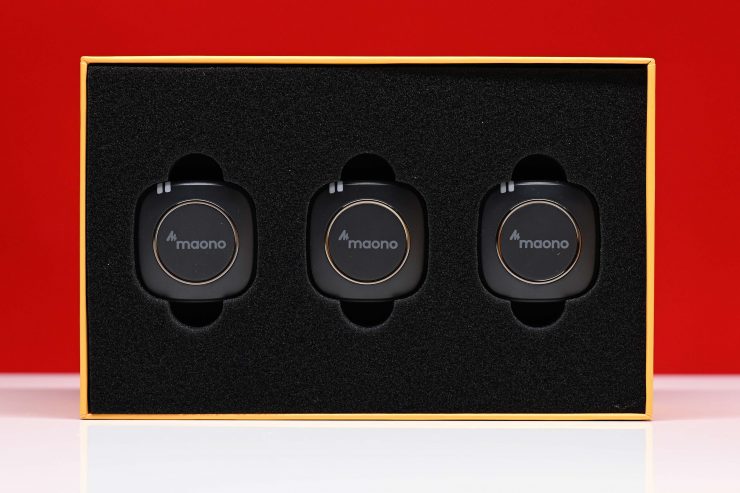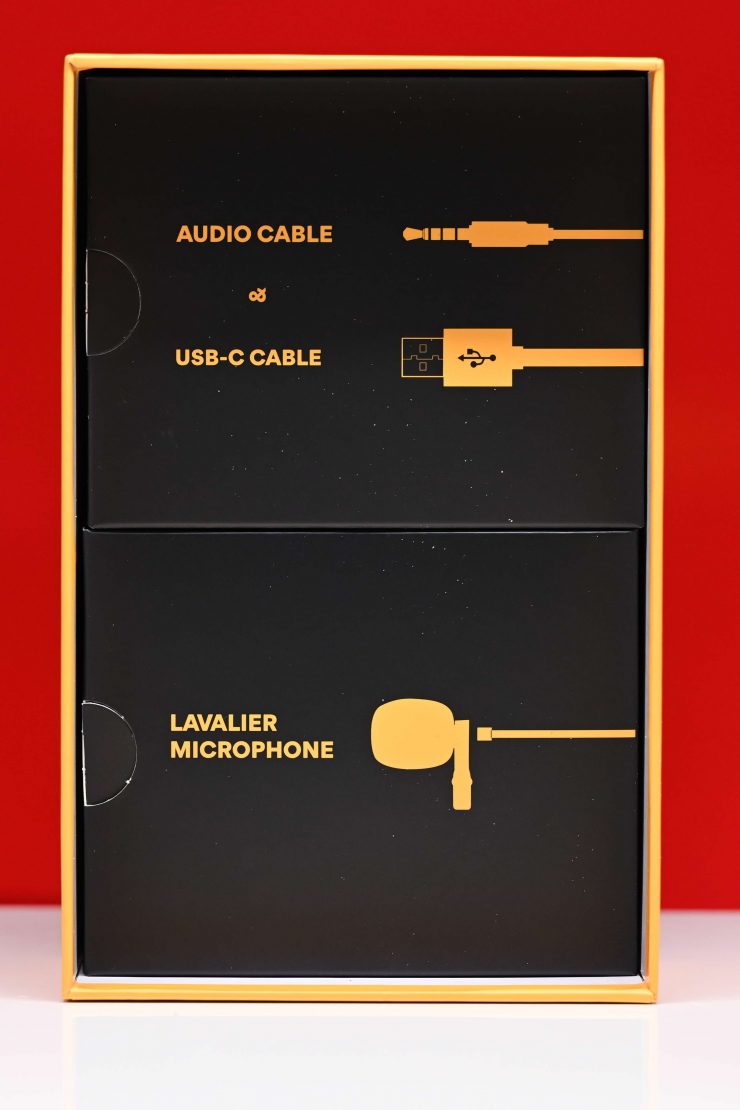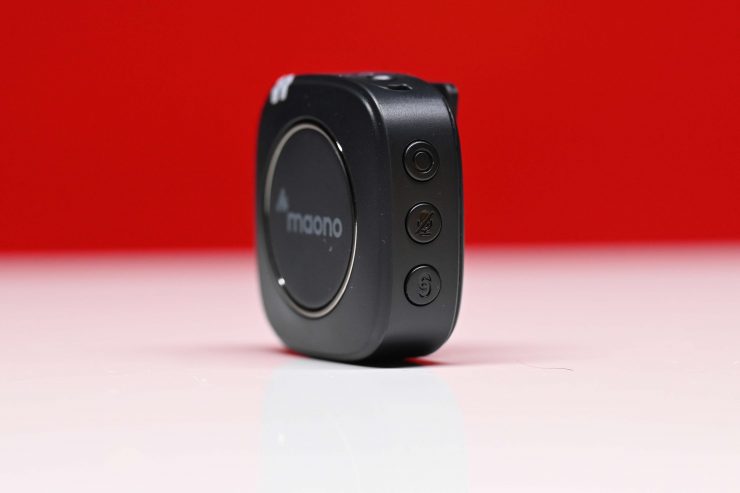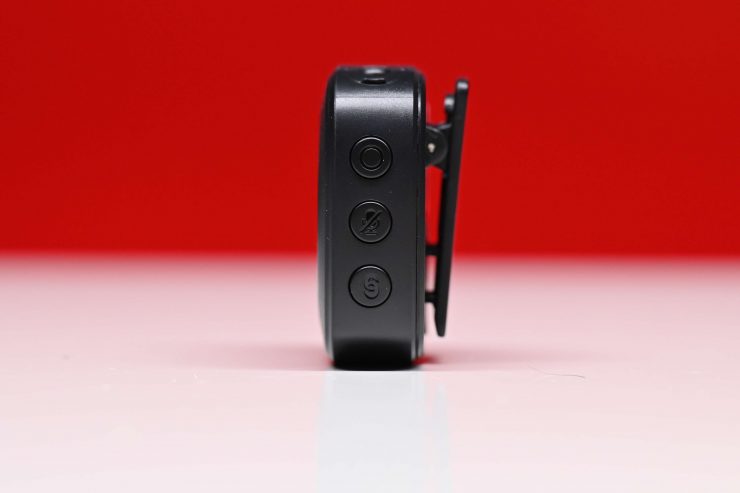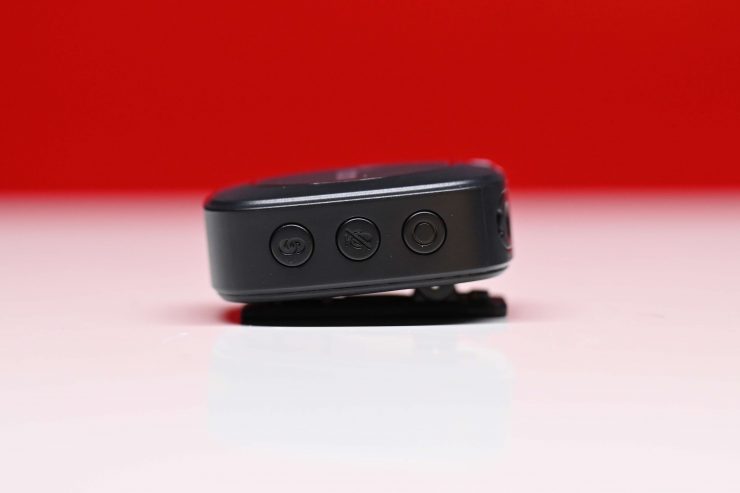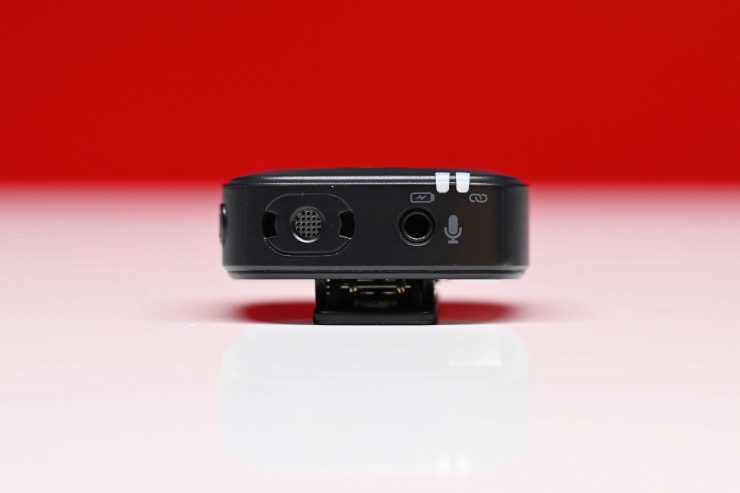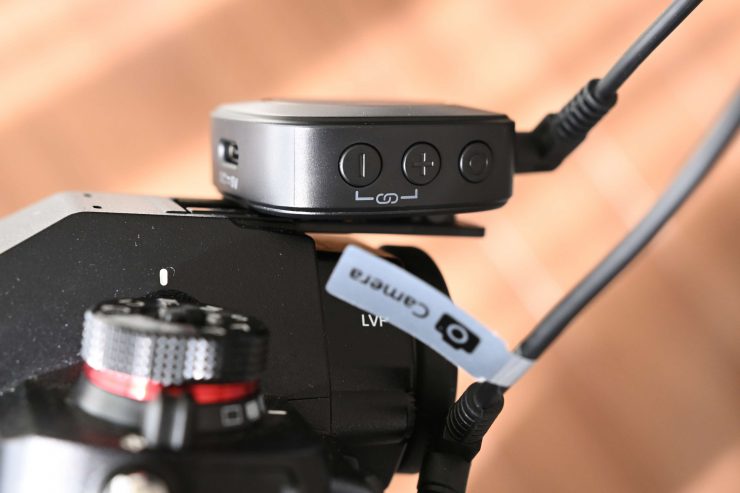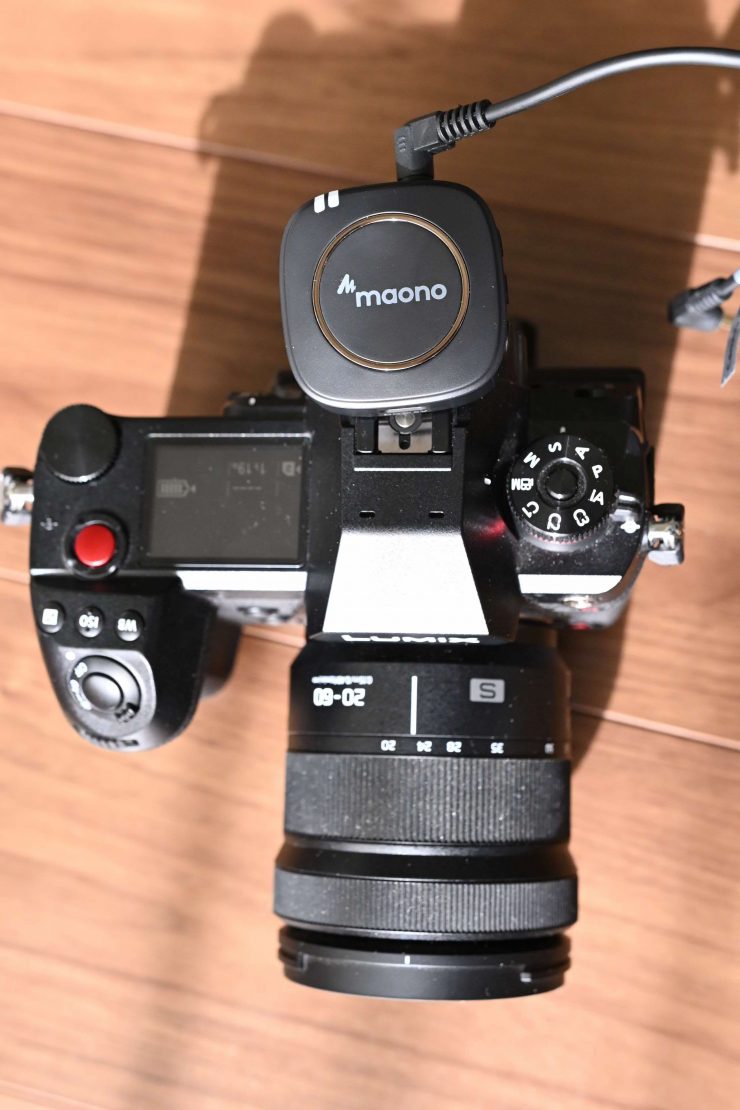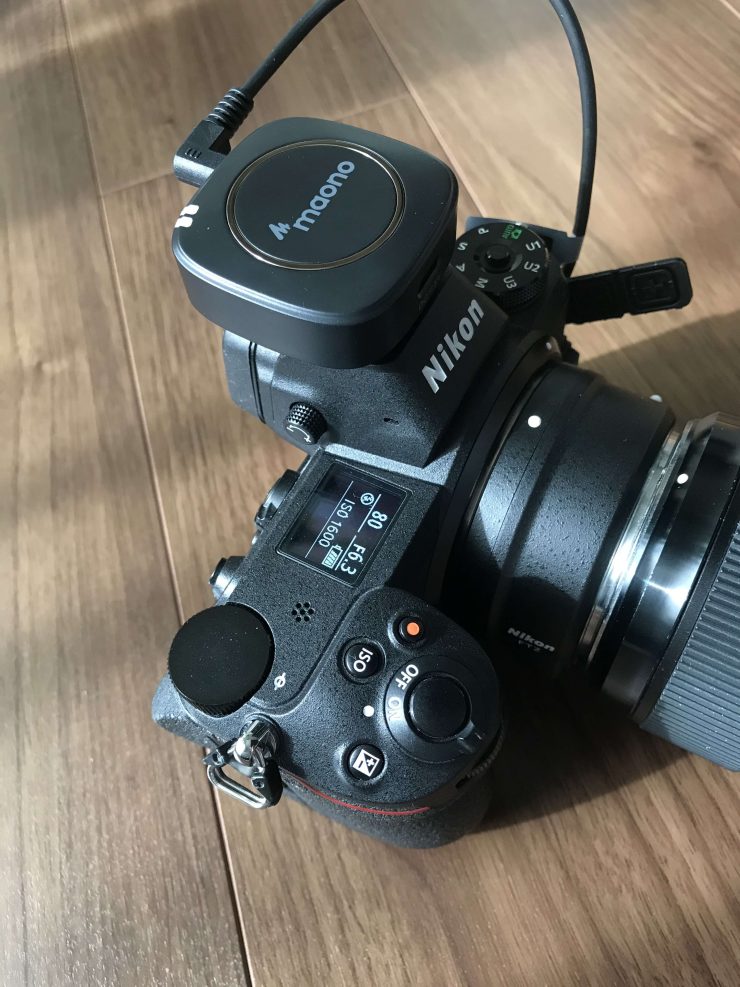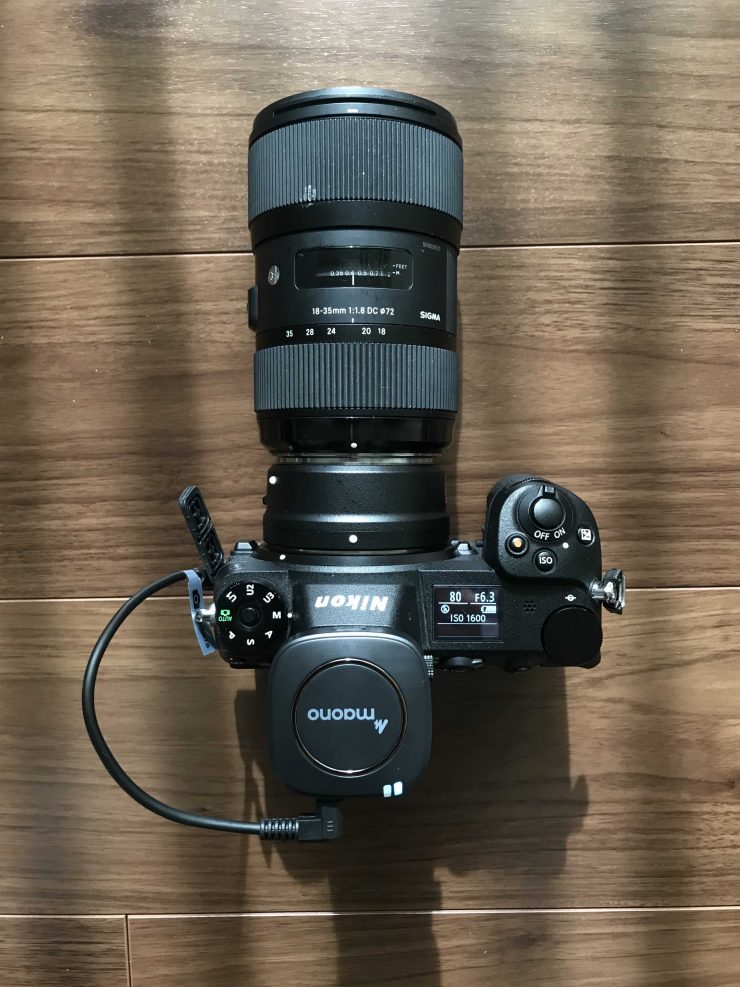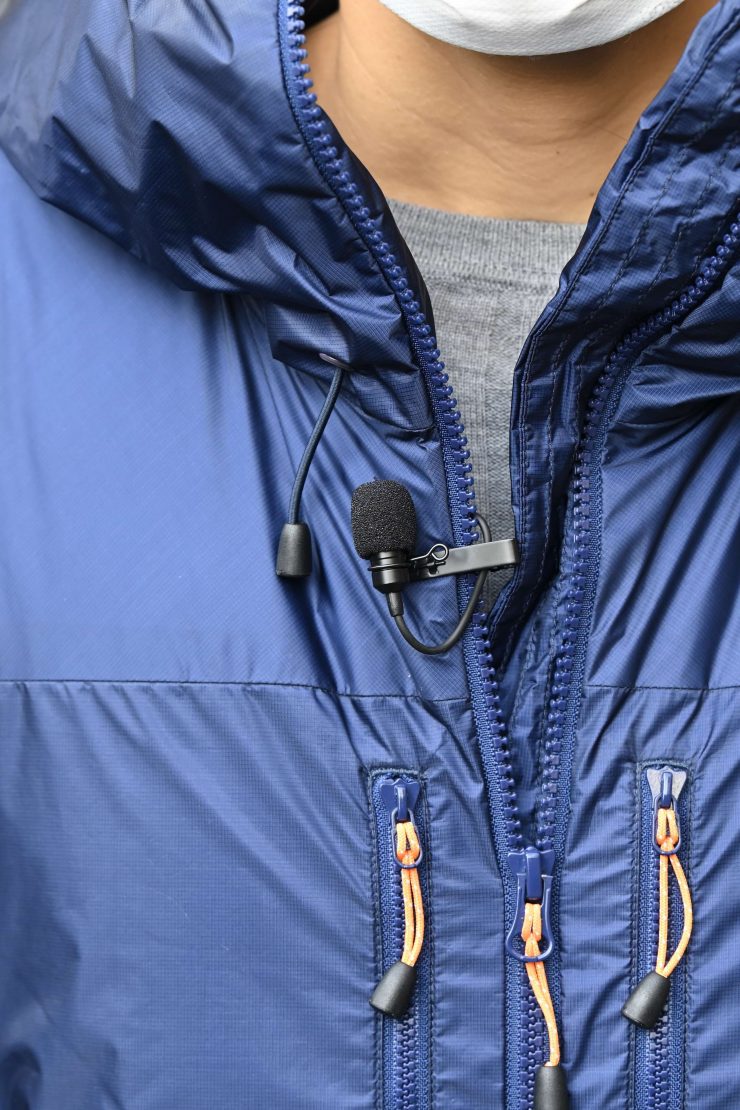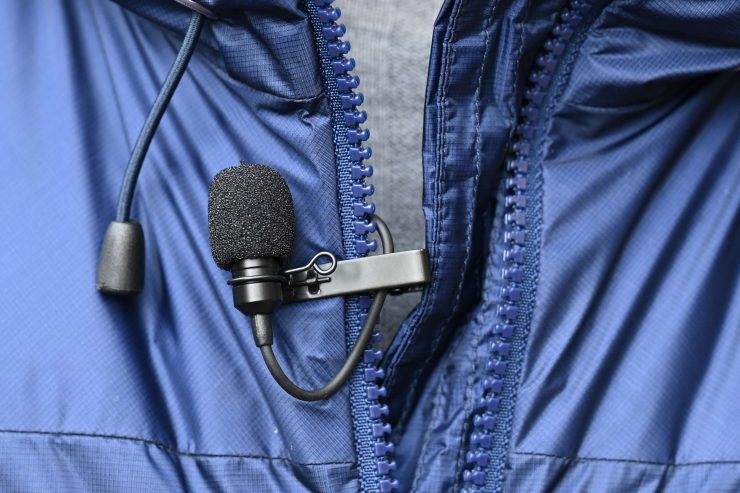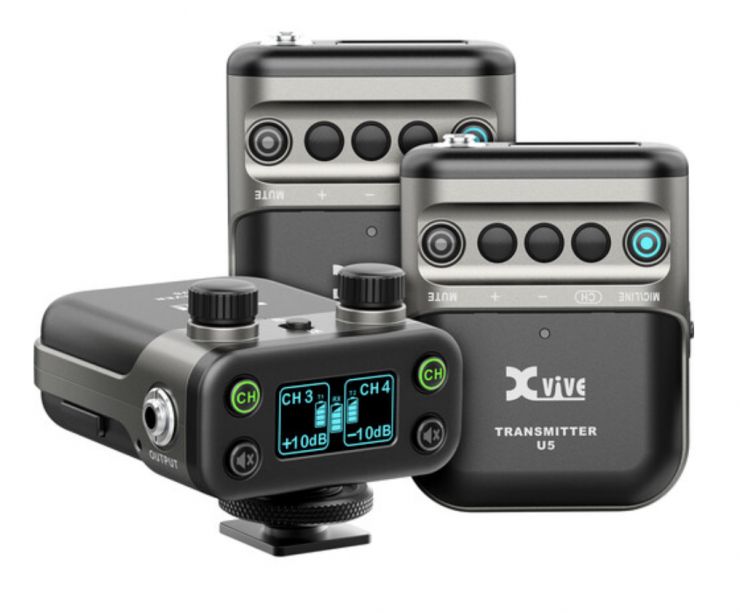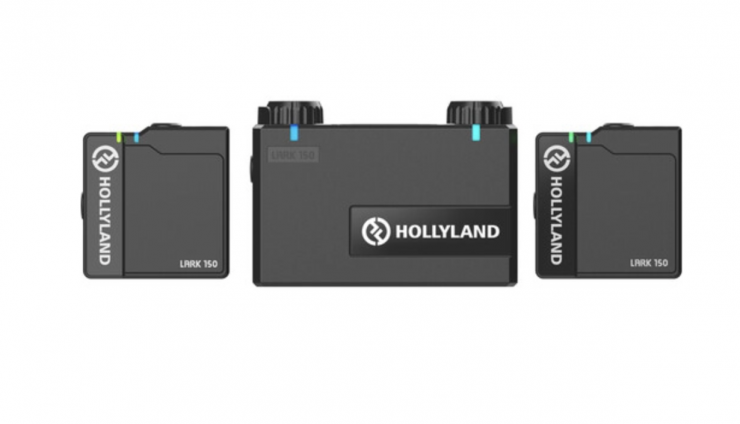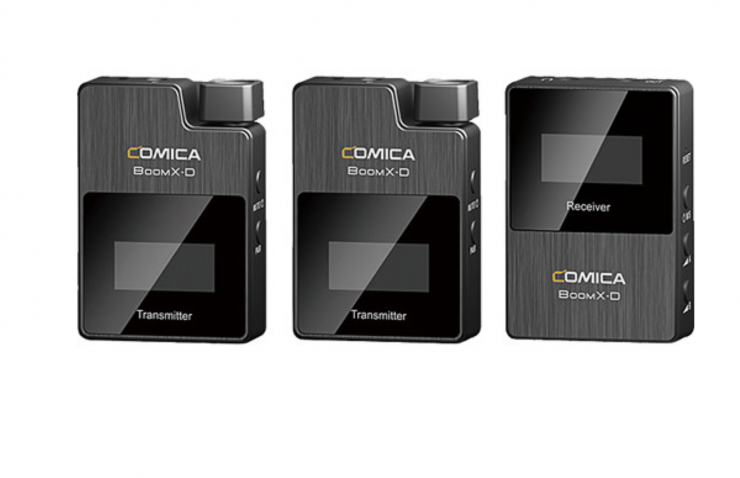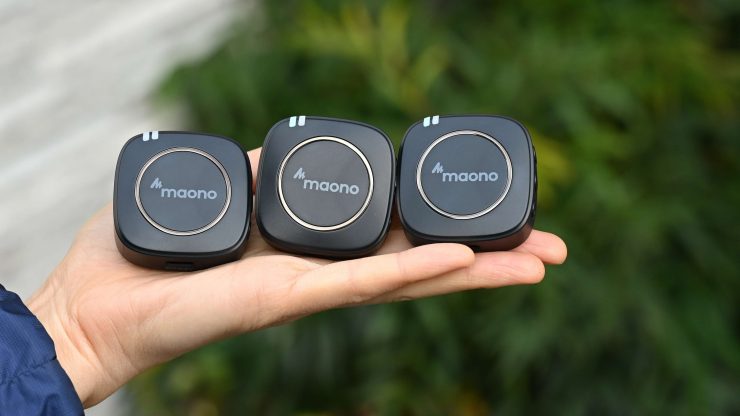
The MAONO WM820-A2 is a budget-friendly 2-person wireless microphone system that works on the 2.4GHz spectrum.
Tiny, digital wireless microphone systems that use a 2.4GHz digital wireless transmission have proved to be very popular with budget filmmakers, YouTubers, and Vloggers. They also make for a good backup audio solution for professionals in case their main system fails.
Over the last few years, we have seen countless imitations of the RØDE Wireless GO come to market from a wide array of manufacturers. Lots of companies expanded on RØDE’s original concept and brought out systems that featured dual TX units and an RX unit that could receive signals from two transmitters. RØDE then brought out the Wireless GO II which was arguably a direct response to some of these competing products that came to market.
The MAONO WM820-A2 2-Person Wireless Mic is yet another system that follows in the footsteps of the Wireless GO. I have never heard of MOANO, but like every product that is reviewed on Newsshooter, regardless of price or who makes it, it will get the same unbiased assessment.
First Impression
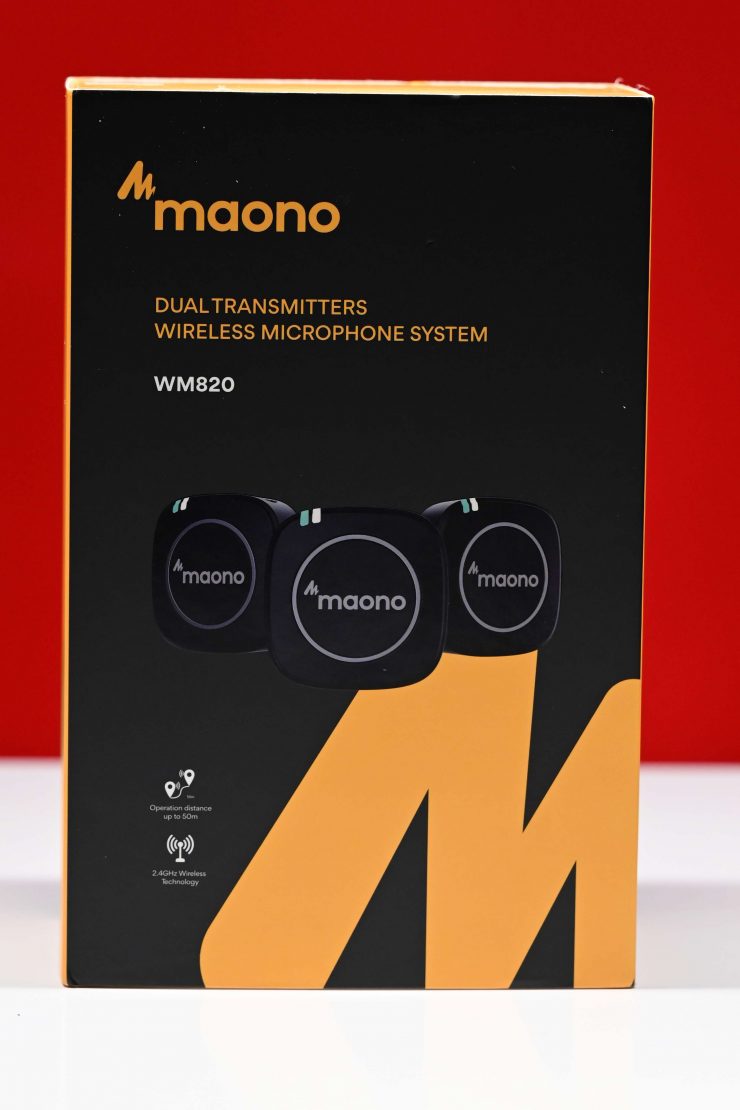
The MAONO WM820-A2 comes in a nice box and it is well presented.
Inside the box, you get the two TX units and an RX unit, as well as the included lavalier microphones and other accessories.
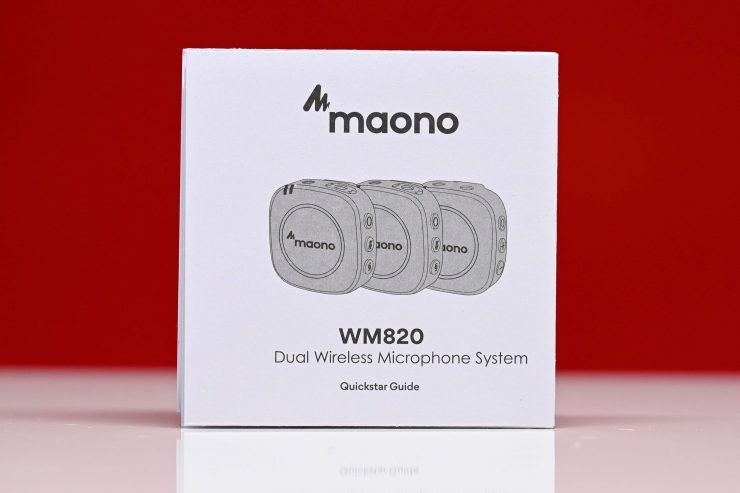
There is also a quick start guide that tells you basic information about the system.
Overview
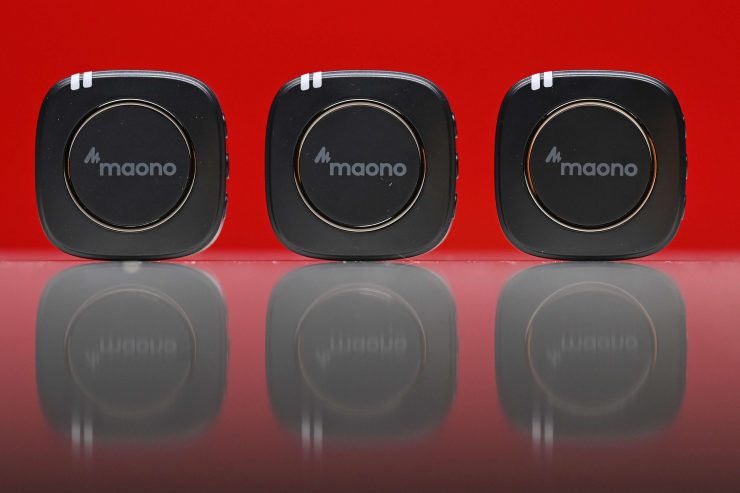
The MAONO WM820-A2 comprises two TX units and one RX unit. The TX units are the RX unit are the exact same size and they look identical at first glance.
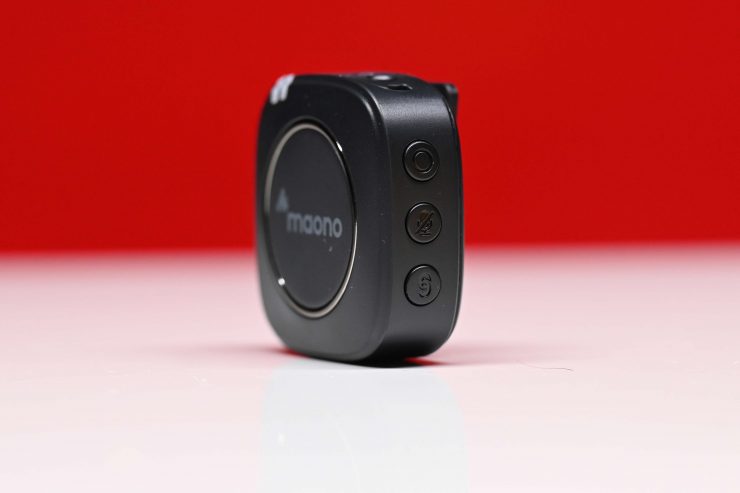
They have been designed with a pocket-sized form factor. The receiver and transmitters both weigh 29g / 1oz.
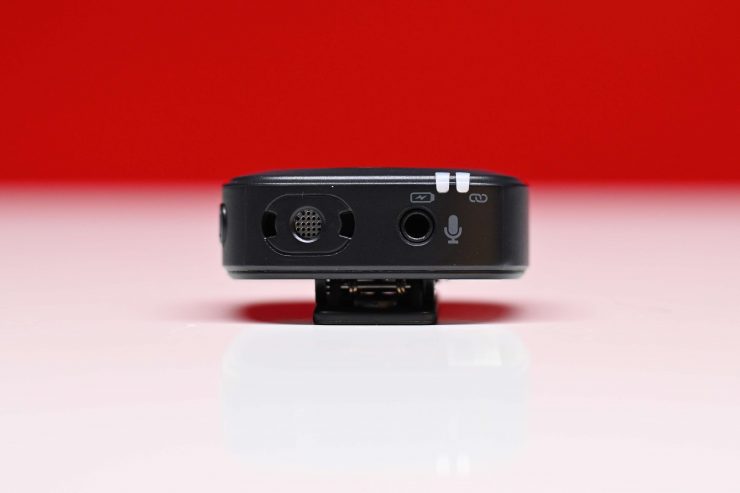
Each transmitter features an in-built omnidirectional condenser capsule and a 3.5mm input for attaching the included lavalier microphones.
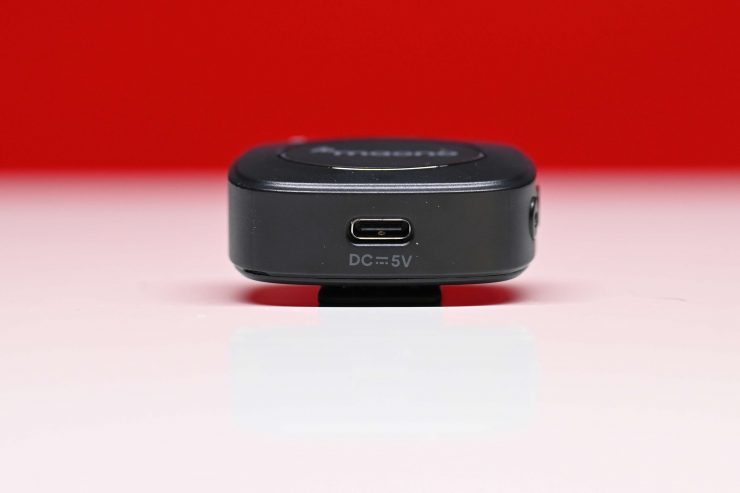
On the bottom of both the TX and RX units is a USB-C input for charging.
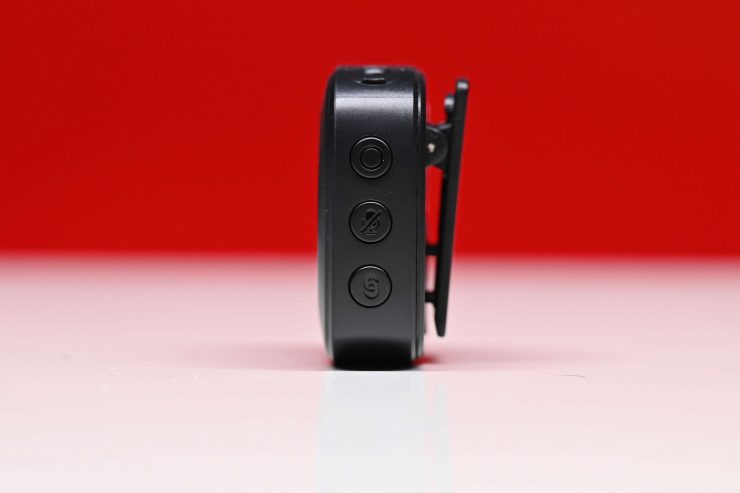
On the side of the TX units, there is a pairing button, mute button, and an on/off switch.
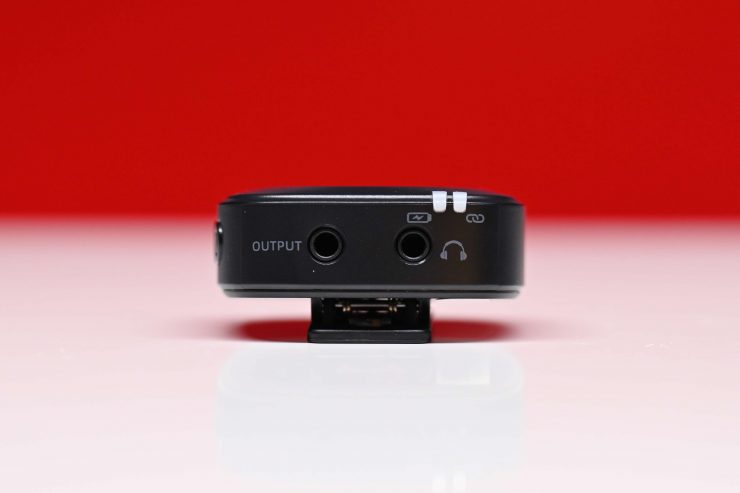
On the top of the RX unit, there is a 3.5mm output and a headphone out.
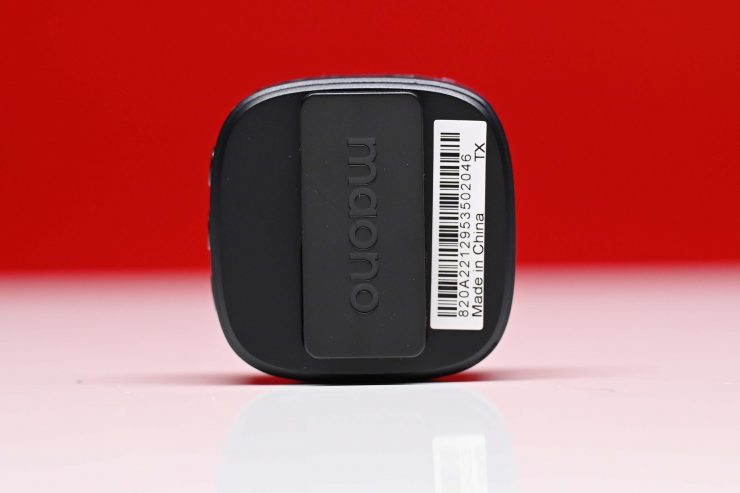
The transmitters and receiver feature a clip on the back. The clip looks almost identical to those found on the RØDE Wireless GO II.
The MAONO WM820-A2 system is about as basic as you can get. There isn’t an LCD display on either the RX or TX units, there is no menu system, no internal recording, and no app. On the RX unit, there are simple + & – buttons for increasing or decreasing the output.
Build Quality
The overall build quality is ok, but it doesn’t feel as well made as something like a Wireless GO II. This doesn’t come as any real surprise, given the low cost of the system. Affordable 2.4GHz wireless systems are not going to have an all-metal construction like a much more expensive wireless system, but nor should you expect them to.
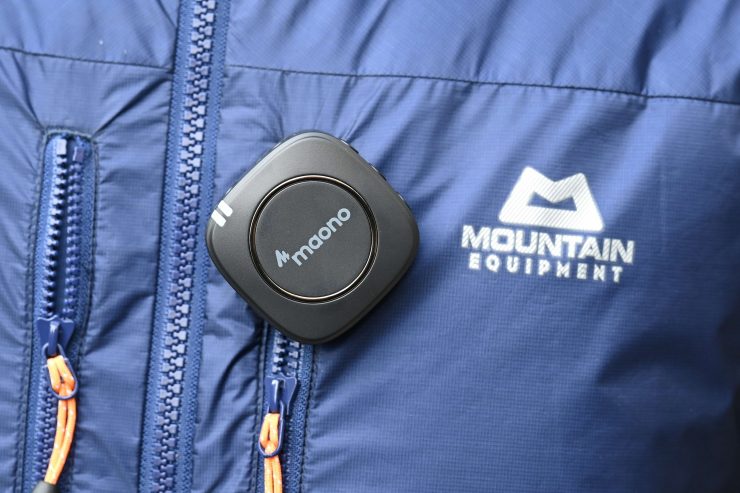
The clips are reasonably robust, however, I did run into an issue when using them on certain cameras.
The clips are supposed to be able to slide into any cold shoe/hot shoe mounting point, however, they wouldn’t fit on the Panasonic S1H. I couldn’t even get the clip to slide in more than about 1cm before it wouldn’t go in any further. Now, this isn’t a problem with the camera because a RØDE Wireless GO II RX unit slid in with no problems at all.
It did slide into the cold shoe on a Nikon Z6, but it was quite tight and it take a bit of effort to get it in. On the Canon R5, it slid on but it was almost too loose.
Mic Input Jack & built-in omnidirectional condenser capsule
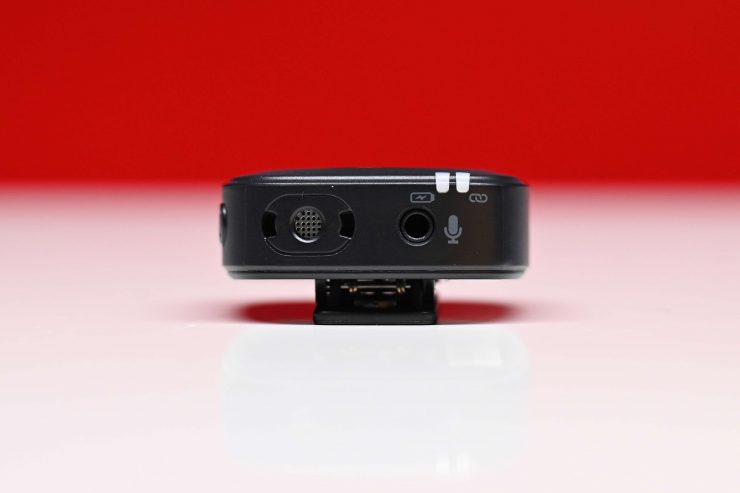
The MAONO WM820-A2 not only has a 3.5mm mic input jack but also has a built-in omnidirectional condenser capsule. This built-in microphone doesn’t feature a twist and turn locking system for the included windjammer like a Wireless Go II.
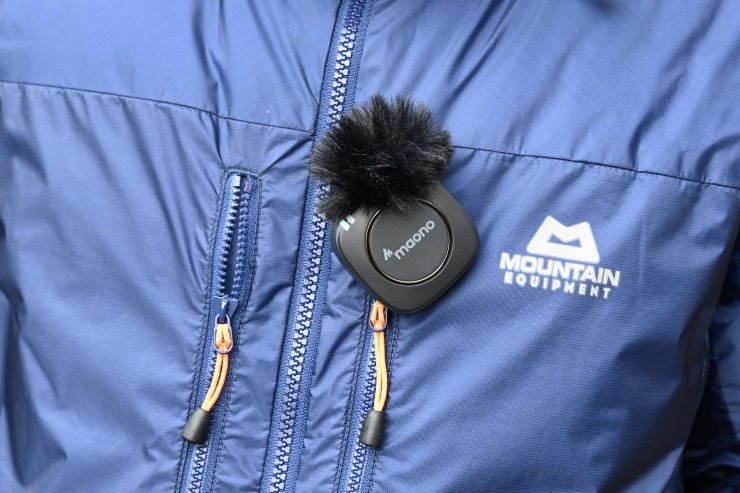
The included windjammer is slightly fiddly to install on the TX units, but it works reasonably well. I do think the overall size of these windjammers that are found on the majority of affordable wireless systems like these is too big.
The internal capsule’s omnidirectional polar pattern should make the audio pickup acceptable even if the mic placement is less than ideal. The 50 Hz to 16 kHz frequency range is supposed to help attenuate sub-bass tones. Just as a reference, the RØDE Wireless GO II’s built-in microphone has a frequency response of 50 Hz to 16 kHz.
No Stereo Output with separate tracks
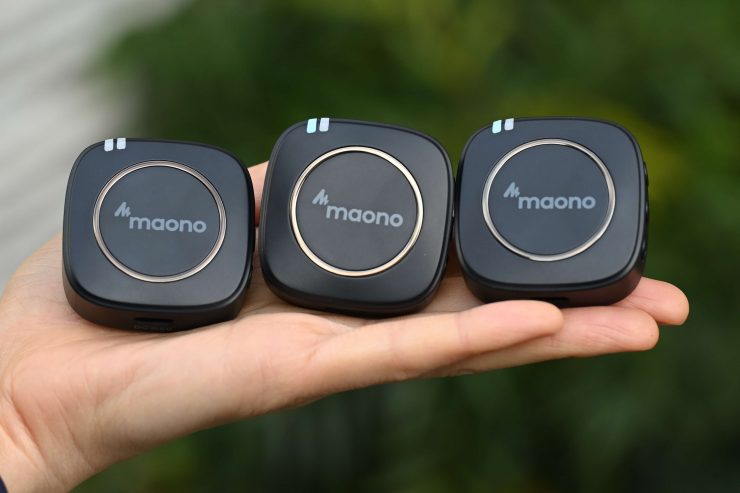
Here is where this product falls over for me. It has been designed as a two-person wireless system, however, it doesn’t output a stereo signal where each TX unit’s own audio signal gets sent to left and right channels.
Audio from both TX units gets combined together on the output from the RX unit. That means everything gets mixed together and you can’t separate the individual tracks. At first, I thought that maybe it was the cable, but I tried that cable with a RØDE Wireless GO II and it was sending out separate left and right tracks for both TX units.
I also reached out to the company that makes the product and they told me, ‘Yes, the RX unit is outputting a combined mix of the audio from both TX units and not separating them.’
I am not sure what the logic is behind this. I can’t think of that many applications where you would want two mic sources being recorded and mixed together on the same channel.
Included Lavalier Microphones
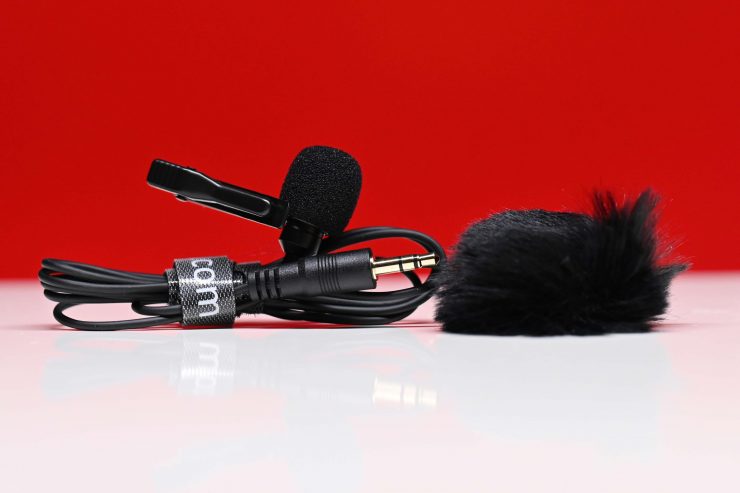
The included Lavalier microphones that come in the kit are decently made, especially given the low price of this system.
The actual Lavalier capsule is quite big and so is the clip. The size of the capsule does make it a lot harder to hide and this is something you need to be aware of.
Record directly to smartphone or tablet
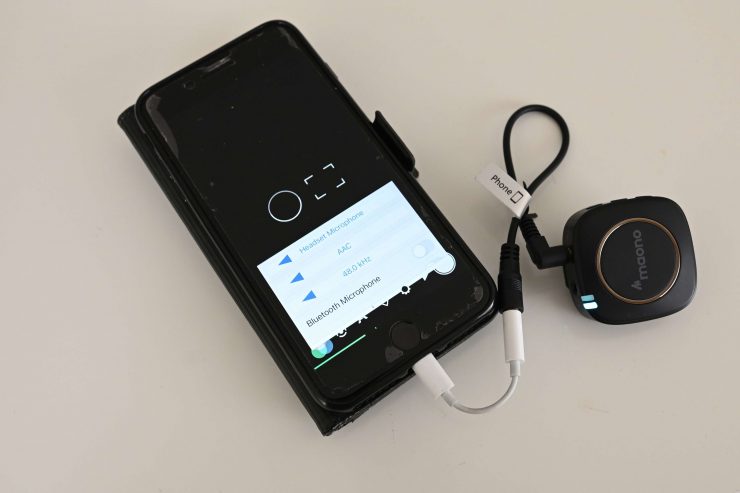
MOANO also included a 3.5mm TRS output cable lets you connect the RX unit to your camera or audio recorder. There is also another 3.5mm TRS output cable in the box that allows you to record directly to a smartphone or other compatible device. This cable doesn’t feature a lighting or USB-C connector at the other end, it is a straight 3.5mm to 3.5nmm.
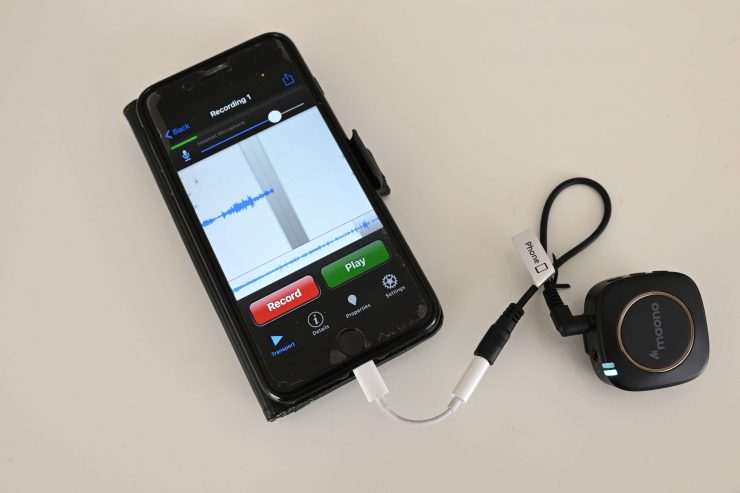
I tried the system with my iPhone and it did work in both Filmic Pro and RODE Record.
You can plug your headphones directly into the output of the RX unit to monitor when recording into a smartphone or tablet.
Frequency band & Range

Just like almost every other affordable wireless microphone system, the MAONO WM820-A2 utilizes the same 2.4 GHz frequency band.
The logic behind using the 2.4 GHz frequency band is so users don’t need to worry about scanning for channels to get a strong signal. They can also use the system anywhere in the world without fear of operating illegally on a restricted bandwidth.
MAONO claims that the range of the system is up to up to 50m / 164′ (line of sight). This is not a large distance and you clearly need to take this into account if you plan on purchasing. I will put the 50m operating range claim to the test further down in the review.
Can you use it directly as a USB-C Mic Source?
I tried plugging the MAONO WM820-A2 directly into a computer using a USB-C to USB-C cable and it didn’t work.
It needs a mobile app
I would have liked to have seen MAONO create a basic app for this system so you could at least monitor levels, make changes, and be able to easily check the battery life.
Real World Performance
Claims and specifications are one thing but how does the MAONO WM820-A2 actually perform in the real world? For me, there are a number of things that are important when using wireless microphone systems:
- Usability
- Reliability
- Audio quality
- Range
- Battery Life
Usability
The usability of the MAONO system is very hit and miss. Pairing up the TX units with the RX is fairly easy and once you have initially paired all three devices you don’t need to do it again. In a lot of ways because the system is so basic and there aren’t a lot of controls or changes you can make it is fairly easy and straightforward to use.
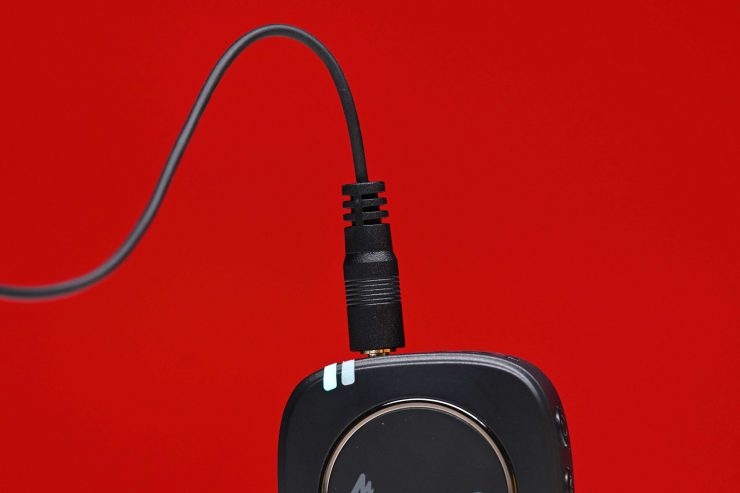
I would have also preferred to have seen a right-angle connector for the lavalier microphone. Though to be fair, almost every manufacturer uses a similar style connector.
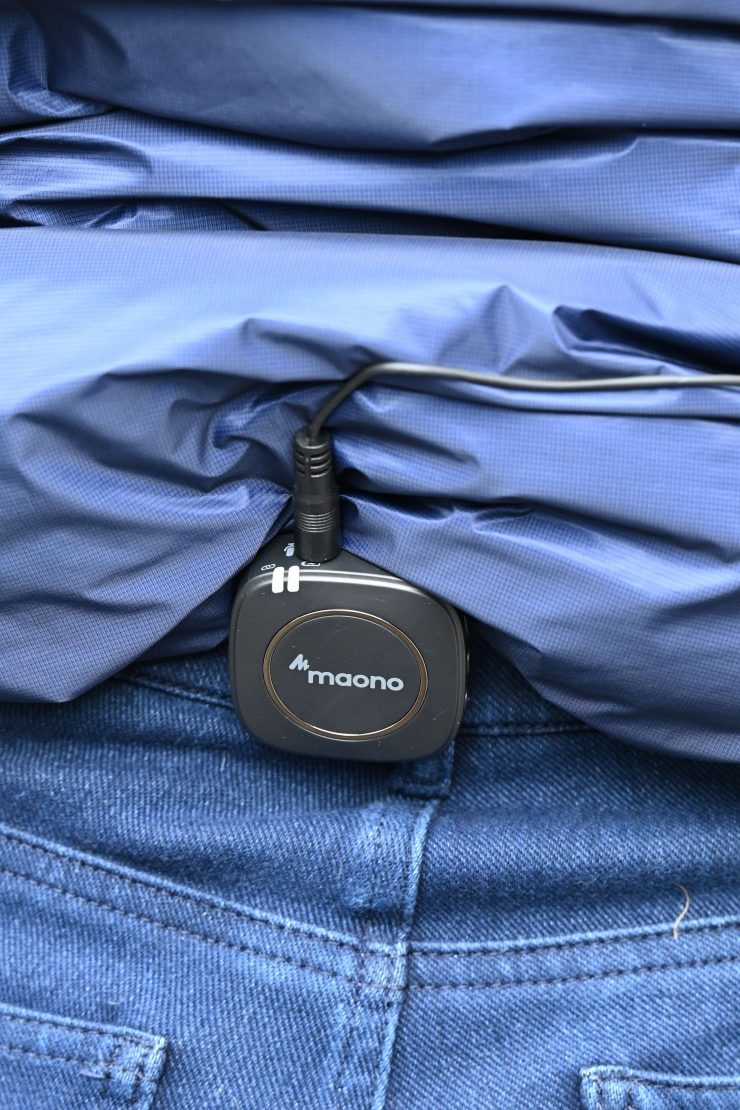
Having a straight connector can be problematic if you clip the TX unit onto someone’s belt and they sit down on a chair.
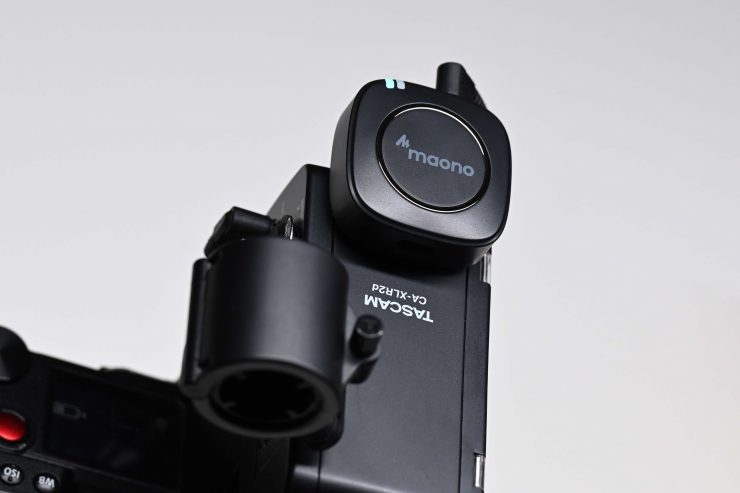
The MAONO RX and TX units don’t have any type of LCD screen. This means you can’t quickly check the battery level for both the RX and the TX, and most importantly you can’t see the actual input level. Quite a few of the other 2.4GHz systems feature an LCD display so that you can clearly and concisely see key information.
One of the issues I found with the system was the output signal. On a Panasonic S1H, if I set the input level to -18db, I had to increase the output level on the RX to its maximum, and even then I couldn’t get enough input level. The problem is that you have no idea what the output level is on the RX unit. I found that I had to make a compromise by increasing the input level on the Panasonic S1H.
The biggest issue with this system is that it doesn’t output a proper left/right stereo signal where audio from each of the TX units gets recorded separately. Everything gets mixed together which totally defeats the purpose of having a dual TX system in the first place.
Reliability
This is a hard one for me to definitely comment on because with most 2.4GHz systems it really depends on where you using it. They may work well in one place, and in another, it may not work at all. This is one of the pitfalls of using wireless mic systems that work on 2.4GHz.
I did my audio tests, both quality, and range with both TX units being close together to see if this affected the performance. I didn’t seem to have any effect, however, with any wireless system that uses 2.4GHz, the results can vary dramatically based on the environment you are in.
You just shouldn’t confuse a system like this with more expensive wireless mics that work on dedicated frequency bands.
Range
The claimed range of the MAONO AU-WM820-A2 is just 50m / 165ft. This is not as far as a lot of other similar systems. As a comparison, the RØDE Wireless GO II has a claimed range of 200m / 656′ (line of sight).
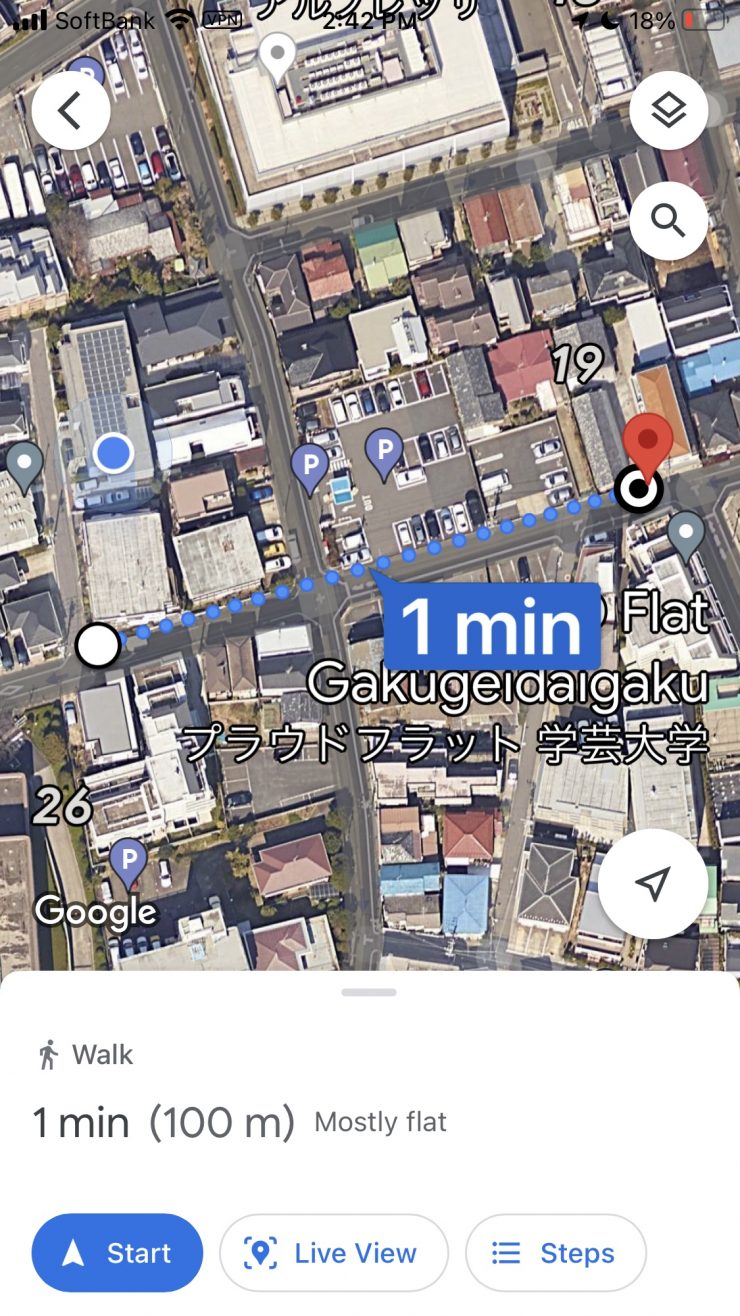
To test the range of the system I remained in line of sight of the RX and started walking away with the TX.
I found I could get around 100m which was a lot further than advertised, however, the single did have a tendency to drop out every now and then. I did this test in the middle of Tokyo which is one of the most heavily congested RF and WiFi traffic areas on the planet. I do this test in the exact same place every time so I get a good baseline to compare wireless systems.
The system seems to have the same issues as most other 2.4GHz systems when it comes to using it when you don’t have line of sight. I found that if the TX units were not facing the RX unit then the range got diminished greatly. When I placed the TX units on the front of a subject and had then walk away from the RX then I started to get audio dropouts within around 25m (82ft). Again, the distance you can use them over will be determined by the environment you are in. In the environment you are in you may get better results than me.
Audio Quality
This is a hard one to comment on. There are so many factors that can determine audio quality. What microphone are you using, what camera are you using, how good are your recording devices pre-amps are, etc., etc.
When you use the built-in omnidirectional condenser capsule on the TX units the quality is actually not too bad. I wouldn’t say it is outstanding, but it’s certainly good enough for people who are going to be using the system for presentations and situations where the sound just needs to be good and not great.
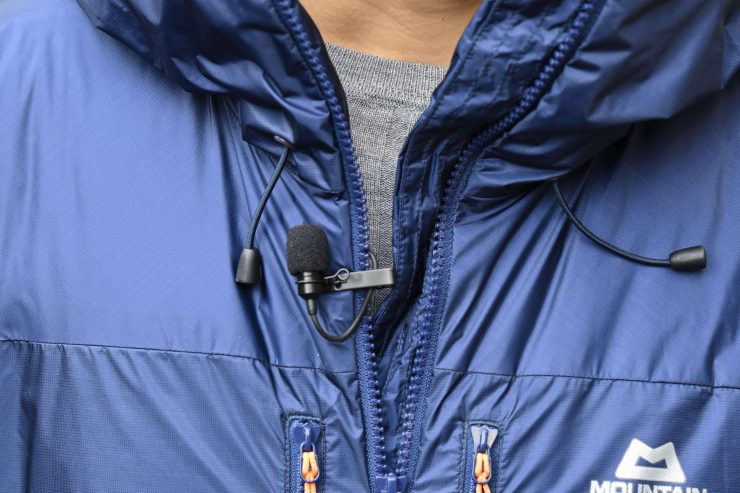
I did some tests using both the built-in microphone and the included lapel microphone. I recorded audio directly into a Panasonic S1H and I set the input level on the camera to -10db.
Above you can listen to a test where I compared the MAONO AU-WM820-A2 directly against the RØDE Wireless GO II. I compared both the included Lavalier microphones and the in-built microphones of both products. The exact same -10db input level was set on the Panasonic S1H. I leave it up to you to decide which one you prefer.
As with any audio recording, you could alter it in post if need be.
Battery Life
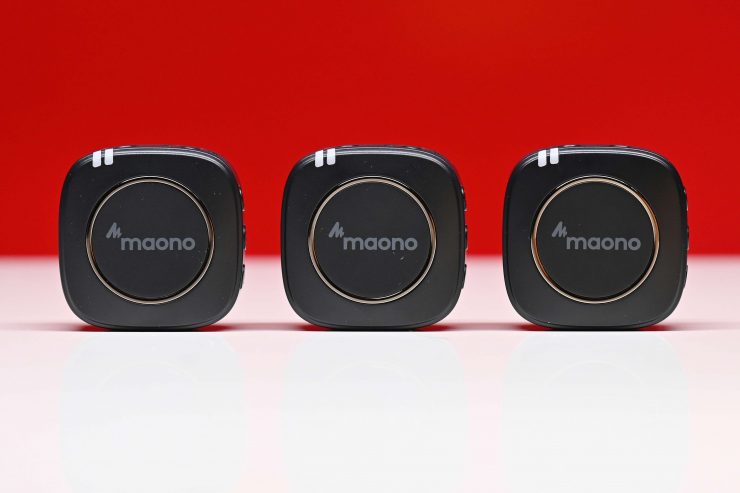
MAONO claims that internal lithium-ion polymer batteries offer up to 6 hours of battery life. From my testing, I found that was reasonably accurate. 6 hours isn’t a ton of time, and this doesn’t make it suitable if you need to record for long periods of time where you can’t charge the TX or RX units. With the RX unit, you could attach it to a USB-C power bank, but that is a lot harder to do with the TX units, especially if someone is wearing one.
The nice thing is you can charge them via a USB Type-C port or power them via external USB battery packs. Having an internal battery is a double-edged sword. On one side it keeps the unit self-contained and small, but on the other side, if that internal battery runs out you need to find an alternative way of powering it. With internal batteries, they will eventually start to lose their performance, however, with an entry-level product such as this you are just as likely to have replaced it or bought a new model before that happens.
What I like is that MAONO gives you a USB-A to USB-C 1-to-three cable so you can charge both the RX unit and the two TX units at the same time.
Too much branding?
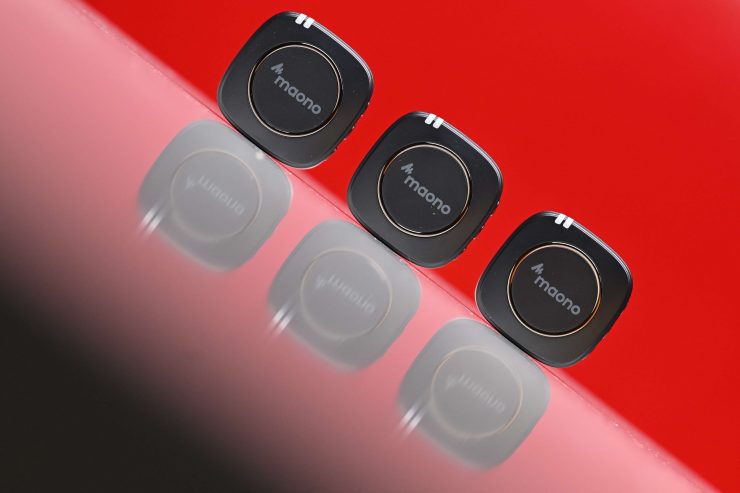
Front 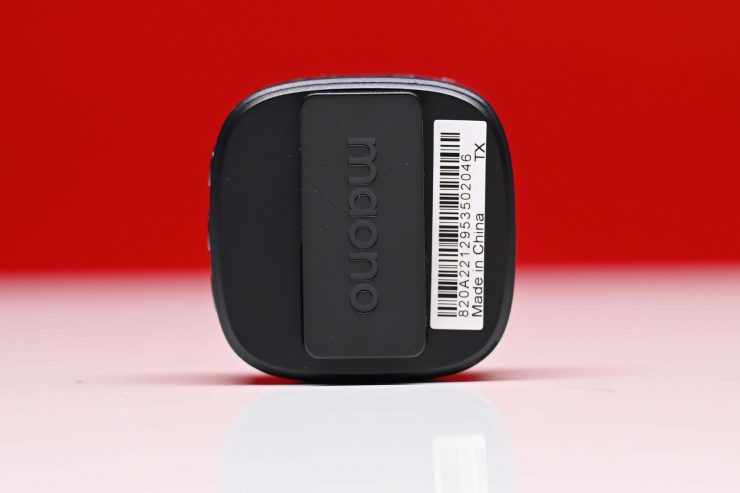
Back
I am still not sure why companies making audio products that have been designed to be seen in the shot put large branding on the TX units. RØDE was arguably one of the first to start this trend, but just about everyone else is doing the exact same thing.
I don’t want a brand name that has absolutely nothing to do with my production prominently displayed in shot. At least if you are hiding the TX units the Lavalier microphone clips don’t have branding on them.
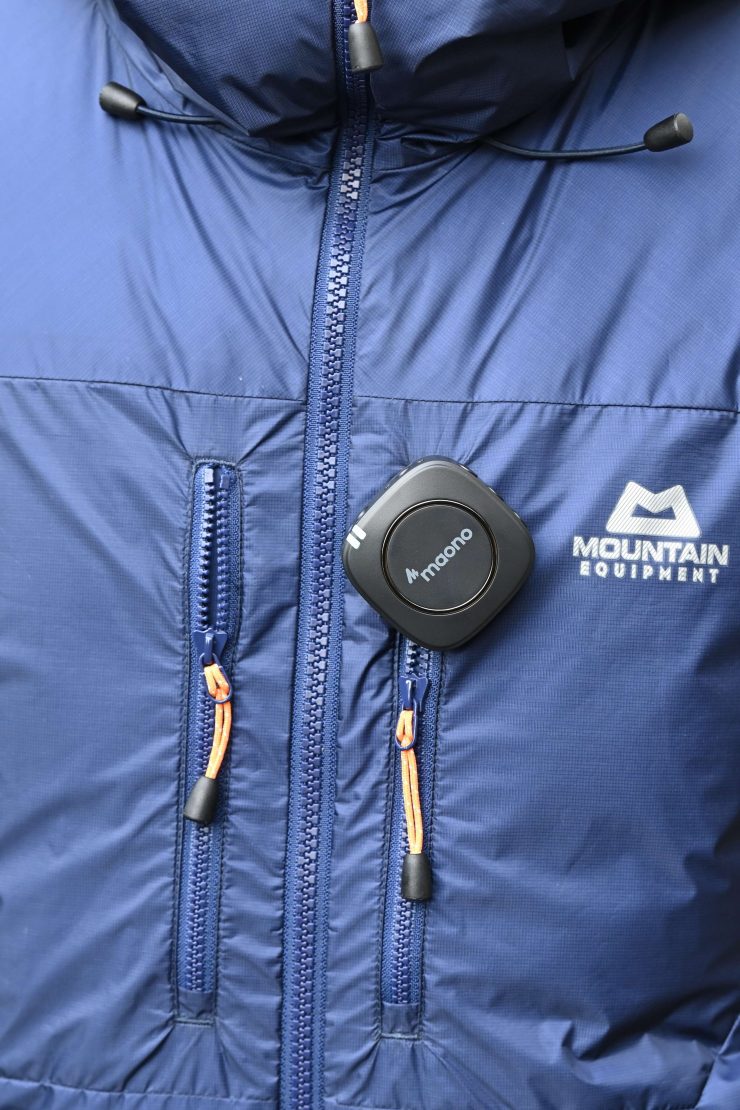
The other problem is that because the TX units have a large gold circle around the companies logo they are susceptible to picking up reflections and reflecting light. If you happen to be placing them directly on a subject you need to be aware of this.
What do you get?
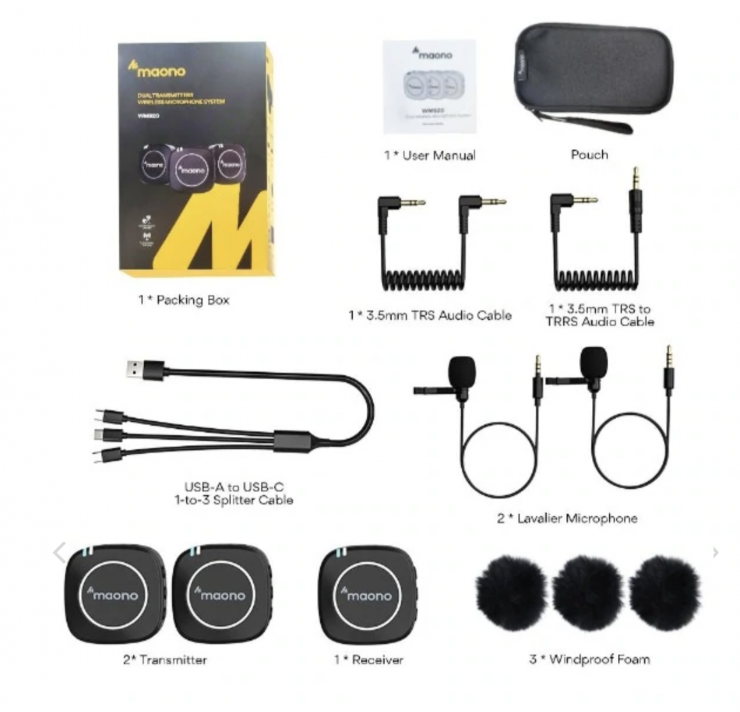
The kit comes with the following items:
- 2x TX units
- 1x RX unit
- 1x 3.5mm TRS audio cable
- 1x 3.5mm TRS to TRRS audio cable
- 2x Lavalier microphones
- 1x USB-A to USB-C 1-to-3 splitter cable
- 3x windproof foams
- 1x instruction manual
- 1x pouch
Price & availability
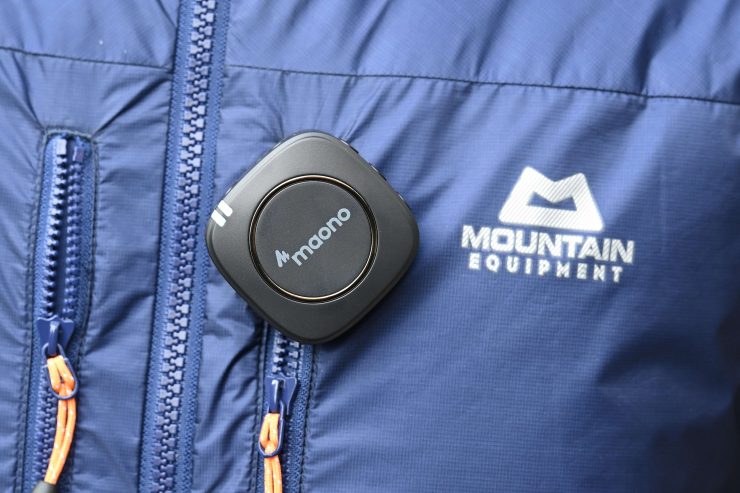
The MAONO WM820 A2 retails for $149.99 USD.
Competition
There are plenty of competing systems out there from a range of manufacturers. Other 2.4GHz systems that utilize two TX units and a single RX unit include:
- Synco WAir-G1-A2 Ultracompact 2-Person Digital Wireless Microphone System for Mirrorless/DSLR Cameras (2.4 GHz) $129 USD
- Hollyland LARK 150 Wireless Dual Microphone System (2.4 GHz) $279 USD
- Comica Audio BoomX-D D2 Ultracompact 2-Person Digital Wireless Micro phone System for Mirrorless/DSLR Cameras (2.4 GHz) $259 USD
- Samson Go Mic Mobile Dual Channel Lavalier System Kit $299.99 USD
- RØDE Wireless GO II 2-Person Compact Digital Wireless Microphone System/Recorder $299 USD
- RØDE Wireless GO II 2-Person Compact Digital Wireless Omni Lavalier Microphone System/Recorder Kit $457 USD
- Xvive Audio U5T2 2-Person Camera-Mount Digital Wireless Omni Lavalier Microphone System for Cameras (2.4 GHz) $339 USD
- Moza WE10 Pro Dual Transmitter Wireless Microphone System (2.4 GHz) $249.99 USD
- Godox MoveLink M2 Compact 2-Person Digital Wireless Microphone System for Cameras & Smartphones with 3.5mm (2.4 GHz) $199 USD
Conclusion
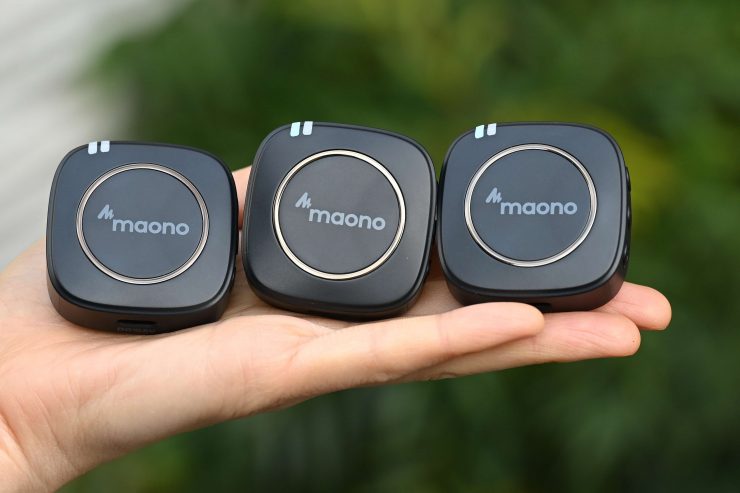
The MAONO WM820-A2 is a very basic/cost-effective system, however, because it can’t output a proper stereo split where audio from each TX unit is separated to the left and right channels everything gets mixed together. This to me, and I think most people will agree, defeats the purpose of having a system with two TX units.
This is a pity because the audio quality, RF stability, range, included accessories, and low price should make it an attractive product.
At the end of the day, you have to remember that this is a $149 USD product so you shouldn’t expect it to be as good as systems that cost twice as much.
Full Specifications
Transmission Type: 2.4GHz Wireless
Included Transmitters: 2 clip-on transmitters
Polar Pattern(Built-in Mic):Omnidirectional
Built-in Mic frequency response:80Hz -16kHz
External Mic frequency response:50Hz -18kHz
Maximum Output Level:+2.2dBu
Maximum SPL:100dB SPL (1kHz @ 1m)
thd+n:0.4%
S/N Raito:82dB
Latency:<30ms (Max)
Sound field: Mono
Indicators:2 x LED on each transmitter/receiver(Sync, Power, battery status)
Transmitter
Audio input: 3.5mm microphone input interface for external mic
Muting: One-button mute (Red LED light indicates the mute feature is on)
Charging port: USB-C, DC 5V 1A Max
Mic gain level: 22
Power: Built-in Li-po battery 350mAh/3.7V
Battery charging time:2 Hours
Battery life: 6 Hours
Housing: Plastic
Dimensions: 45mm x 45mm x 17mm
Receiver
Mounting options: Belt clip
Charging port: USB-C, DC 5V 1A Max
Audio Output: 1/8″/3.5mm TRS connector; 1/8″/3.5mm headphone jack
Power: Built-in Li-po battery 350mA/3.7V
Battery charging time: 2 Hours
Battery life: 6 Hours
Housing: Plastic
Dimensions: 45mm x 45mm x 17mm

